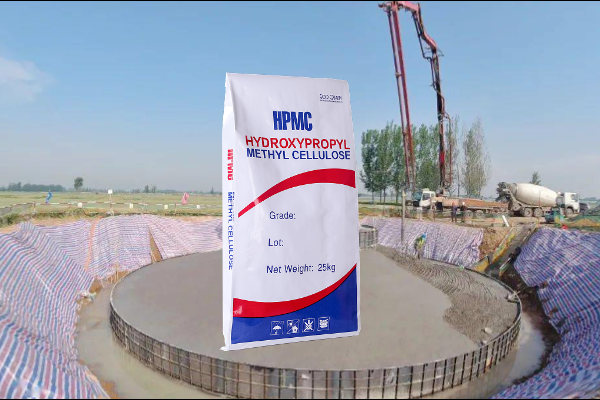In the realm of construction and engineering, grouting plays a pivotal role in ensuring the structural integrity and stability of various projects. From filling voids and cracks to enhancing load-bearing capacities, grouting materials are indispensable. Among the various additives and modifiers used to enhance grout performance, Hydroxypropyl Methylcellulose (HPMC) stands out due to its unique properties and versatility. This blog post delves into the intricacies of using HPMC for grouting, highlighting its benefits, applications, and how it contributes to optimizing grouting processes.

HPMC, derived from cellulose through chemical modification, is a water-soluble polymer that finds extensive use as a thickening and stabilizing agent. Its molecular structure allows it to form viscous solutions when dispersed in water, making it an ideal additive for grouting materials. The ability of HPMC to retain water and create a cohesive mix is crucial in grouting applications, as it ensures uniform distribution and prevents segregation of components. This property is particularly beneficial in underground and confined spaces where grouting needs to be precise and effective.
Moreover, HPMC's rheological properties can be tailored to meet specific project requirements. By adjusting the concentration and type of HPMC used, engineers can control the viscosity, workability, and setting time of the grout, enabling it to adapt to diverse geological conditions and structural needs. This adaptability makes HPMC a versatile solution for a wide range of grouting projects, from small-scale repairs to large-scale infrastructure developments.
The integration of HPMC into grouting formulations brings several notable benefits, significantly enhancing both the performance and efficiency of grouting operations. Firstly, HPMC acts as a natural water retainer, ensuring that the grout mixture maintains its workability over extended periods. This is particularly advantageous in hot or dry climates where water evaporation can rapidly compromise the quality of traditional grouts.
Secondly, HPMC enhances the cohesive strength of the grout, making it more resistant to cracking and segregation. This results in more durable and reliable grouting solutions that can withstand the stresses and pressures associated with various loads and environmental conditions. Additionally, HPMC-modified grouts exhibit improved fluid loss control, which is essential for maintaining the integrity of the grout during placement and curing.
Lastly, the use of HPMC promotes environmental sustainability. As a natural polymer derived from renewable resources, HPMC offers a greener alternative to synthetic additives. Its biodegradability and low environmental impact make it a preferred choice for eco-conscious construction projects.
The versatility of HPMC extends to its diverse applications in grouting. In foundation grouting, HPMC-modified grouts are used to fill voids and stabilize soil, ensuring that structures are built on a solid and stable base. In tunnel construction, HPMC helps create impermeable linings that protect against water infiltration and ground movement, enhancing the safety and durability of the tunnels.
Additionally, HPMC finds use in post-tensioning grouting, where it ensures the precise placement and bonding of tendons and anchors. This is crucial for maintaining the structural integrity of bridges, high-rise buildings, and other structures that rely on post-tensioning for their stability. In repair and rehabilitation projects, HPMC-based grouts are employed to restore damaged concrete structures, filling cracks and voids to prevent further deterioration.
The table below summarizes some of the key applications of HPMC in grouting and the specific benefits it offers in each context:
| Application | Benefits Offered by HPMC |
|---|---|
| Foundation Grouting | Enhanced stability, reduced settlement, improved load-bearing capacity |
| Tunnel Linings | Watertight sealing, resistance to ground movement, durability |
| Post-Tensioning Grouting | Precise placement, strong bonding, improved structural integrity |
| Repair and Rehabilitation | Crack filling, void elimination, extended service life of structures |
As the demand for robust and sustainable construction solutions continues to grow, the role of HPMC in grouting applications is poised to expand. Its ability to enhance grout performance, coupled with its environmental benefits, makes it an invaluable addition to the construction industry's toolkit. With ongoing research and development, we can expect even more innovative uses of HPMC in grouting, tailored to meet the evolving needs of modern infrastructure.
For engineers and contractors, embracing HPMC-modified grouts represents a step forward in achieving higher standards of quality, efficiency, and sustainability in their projects. As we look towards the future, the integration of HPMC in grouting practices will undoubtedly play a pivotal role in shaping the resilient and sustainable built environments of tomorrow.
By understanding the unique attributes and applications of HPMC, professionals in the construction sector can harness its full potential, ensuring that their grouting solutions are not only effective but also aligned with the principles of sustainable development.
Previous: Advantages of Using Redispersible Polymer Powder RDP in Tile Adhesives
Next: None.
Copyright:@2020-2021
Comments Please sign in or sign up to post.
0
0 of 500 characters used